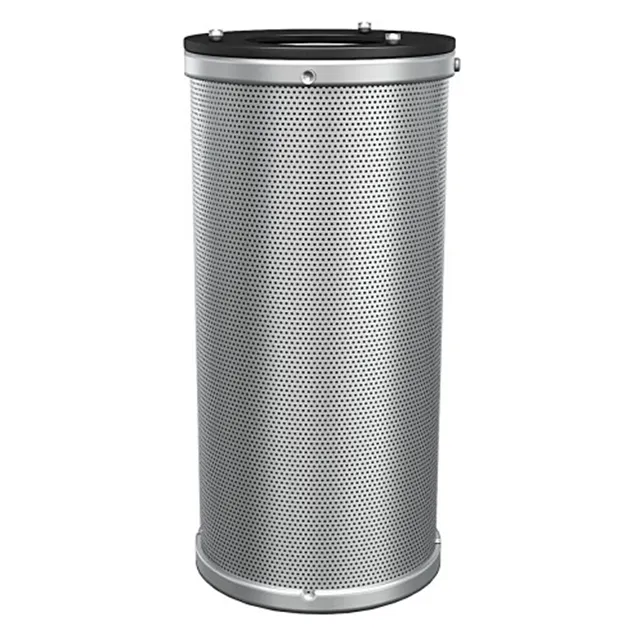 Tel:
+8615930870079
Tel:
+8615930870079
iul. . 26, 2024 08:22 Back to list
Effective Dust Management Strategies for Cartridge Filtration Systems in Industrial Applications
The Importance of Dust Cartridges in Modern Filtration Systems
In the ever-evolving landscape of industrial and commercial operations, dust control remains a critical concern for maintaining workplace safety and efficiency. Among the various solutions available, dust cartridges have emerged as a vital component in the fight against airborne particulates. These cartridges play a crucial role in filtration systems designed to capture dust, ensuring clean air and a healthier environment for workers and equipment alike.
Understanding Dust Cartridges
Dust cartridges are specialized filters designed to remove dust and other particulate contaminants from the air. They are typically composed of synthetic or natural fibers arranged in a pleated configuration, increasing the surface area available for trapping particles. This design allows dust cartridges to effectively manage high volumes of air while maintaining low resistance, enhancing the overall performance of dust collection systems.
The effectiveness of a dust cartridge is measured by its efficiency rating, which indicates how well it captures particles of various sizes. High-quality cartridges can capture particles as small as 0.3 micrometers, which is particularly important in industries such as pharmaceuticals, food processing, and manufacturing, where even minute contaminants can compromise product quality and safety.
Applications Across Industries
Dust cartridges are used in a variety of industries, including woodworking, metalworking, pharmaceuticals, food production, and more. In woodworking shops, for instance, sawdust and wood particles can pose not only a health hazard but also a fire risk. Dust collection systems equipped with efficient dust cartridges can mitigate these risks, ensuring a safer work environment.
In the pharmaceutical industry, maintaining air quality is paramount. Dust cartridges help to minimize contamination during the manufacturing process, thereby safeguarding product integrity and compliance with strict regulatory standards. Similarly, in food production facilities, the thorough removal of dust and allergens is essential to protecting both workers and consumers.
dust cartridges

Benefits of Dust Cartridges
One of the most significant advantages of dust cartridges is their ability to improve air quality, protecting workers from respiratory issues and other health risks associated with prolonged exposure to dust and particulates. Enhanced air quality can lead to increased productivity, as employees are less likely to experience fatigue or illness due to poor working conditions.
Moreover, dust cartridges contribute to the longevity of equipment and machinery. Dust accumulation can hinder the performance of machines, leading to costly repairs and downtime. By effectively capturing airborne particles, dust cartridges help maintain cleaner operational environments, ultimately reducing maintenance costs and extending the lifespan of equipment.
Environmental Considerations
As industries face increasing pressure to adopt sustainable practices, the role of dust cartridges in environmental management becomes more pronounced. Modern dust collection systems are designed to minimize energy consumption and maximize efficiency, thereby reducing the carbon footprint of operations. Additionally, many dust cartridges are recyclable or made from sustainable materials, allowing businesses to further their commitments to environmental responsibility.
Conclusion
In conclusion, dust cartridges are an essential component of effective dust control strategies across various industries. By improving air quality, enhancing worker safety, and protecting equipment, these filters contribute significantly to operational efficiency and sustainability. As technological advancements continue to evolve, the design and performance of dust cartridges will likely improve, paving the way for even more effective dust management solutions in the future. Investing in high-quality dust cartridges is not merely a regulatory obligation; it is a commitment to creating safer, healthier, and more sustainable work environments.
-
Types and Applications of Air Filtration CartridgesNewsJul.28,2025
-
The Role of Gas Turbine FiltersNewsJul.28,2025
-
Mastering Air Filter Cartridge UseNewsJul.28,2025
-
Advanced Turbine Filters for Modern Gas TurbinesNewsJul.28,2025
-
Cellulose Air Filter Cartridge Advantages in Dust FiltrationNewsJul.28,2025
-
Cellulose Filters for Air Particle ReductionNewsJul.28,2025

 Email:
Email:





